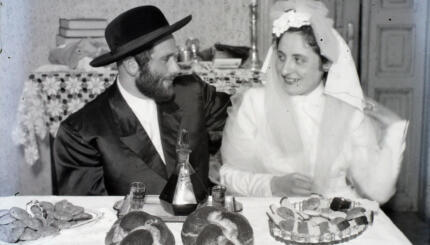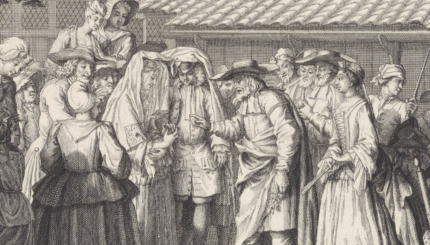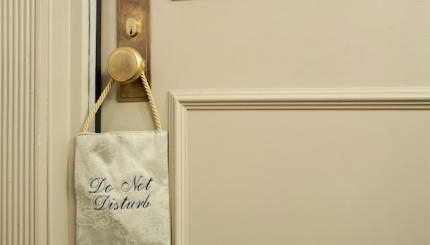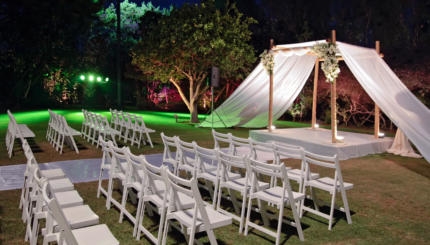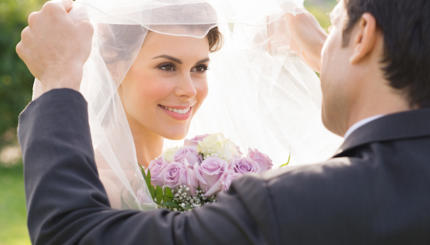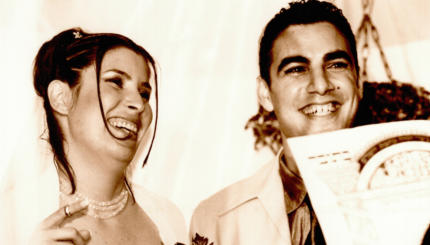Weddings & Marriage
Arriving at the Huppah, or Wedding Canopy
A procession leads the groom and then the bride to the huppah, where the bride traditionally encircles the groom three or seven times.
Nissuin: The Second of the Two Ceremonies
The substance of nissuin, the actual marriage ceremony, are seven blessings that reflect the themes of creation, joy, and bride and groom.
Erusin: The First of the Two Ceremonies
Erusin, the ancient betrothal ceremony, includes two blessings and the ring ceremony, and is followed by the reading of the marriage contract.
After the Wedding Ceremony
After the wedding, bride and groom retreat to a seclusion room, rejoin their guests for a festive meal, and then celebrate with friends and family for the next seven days.
The Chuppah, or Wedding Canopy
A Jewish wedding takes place under a chuppah, which symbolizes the new Jewish home being created by the marriage.
Marriage & Community
In entering into marriage, a couple takes on new responsibilities for the Jewish community and its future.
Before the Jewish Wedding Ceremony
Before the wedding, bride and groom are feted, the bride is veiled, and the groom dons a shroud-like garment.
Tenaim: The Conditions of Marriage
Contemporary couples are reinterpreting an old ceremony that set the financial and logistical arrangements for an upcoming marriage
Three Prenuptial Agreements That Just Might Work
Three prenuptial marriage protection agreements have been accepted by Orthodox rabbis as fulfilling halakhah (Jewish law).
The Ketubah Text (Part 2)
The second part of the ketubah (marriage contract) details the additional gift promised by the groom, the lien on his property, and the acquisition sealing the contract.
The Ketubah Text
The traditional Aramaic text of the ketubah (marriage contract) reflects the history of Jewish marriage.
Marriage & God
As part of God's creation, Jewish marriage creates a spiritual connection between human beings and with God.

